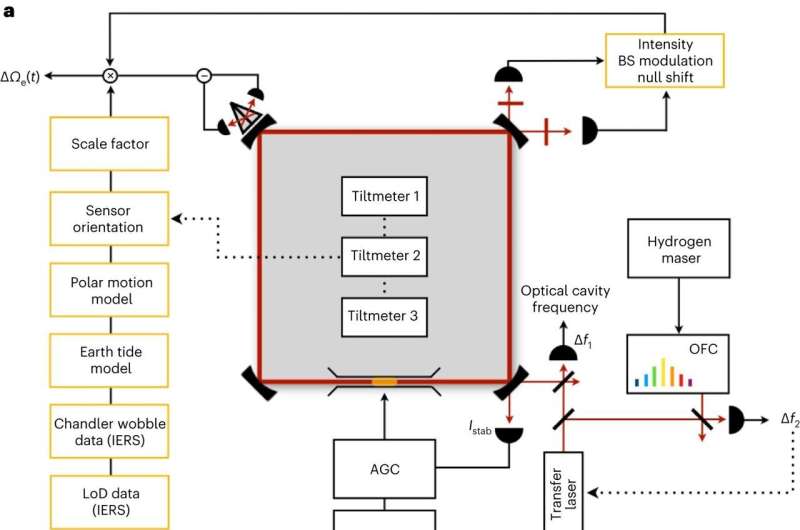September 19, 2023 report
This article has been reviewed according to Science X's editorial process and policies. Editors have highlighted the following attributes while ensuring the content's credibility:
fact-checked
peer-reviewed publication
trusted source
proofread
Using a gyroscope to measure variations in Earth's rotation

A team of scientists has developed a novel way to measure variations in the Earth's rotation. In their paper published in the journal Nature Photonics, the team explains how their new approach works and how well it did when tested. Caterina Cimminelli and Giusepeppe Brunetti have published a News & Views piece in the same journal that discusses the main study's findings.
For many years, scientists have been attempting to improve on measures of the precision of the Earth's rotation—to more clearly describe the length of a given day. Making things more difficult is that the length of a given day depends on many factors, such as the pull of the moon, ocean currents and which way the wind blows. Prior efforts to measure the length of a day has involved use of radio telescopes or signals sent by many facilities stationed on Earth. In more recent times, Earth-orbiting satellites have been used, increasing precision. In this new effort, the researchers have tried a new approach—using a gyroscope.
The gyroscope, which has been named simply "G," is based at Germany's Geodetic Observatory Wettzell. It was made using a 16-meter-long laser cavity, making it a ring type. Inside, dual laser beams traveling in opposite directions of one another interact, which results in the creation of an interference pattern. The system works because the laser that moves in the same direction as Earth is more stretched than the one that moves in reverse.
Then, as Earth rotates, fluctuations in its rate of speed are reflected in fluctuations in the interference pattern. From that, the researchers were able to calculate how much distance a given point on Earth had traveled over a given time period. Repeating the exercise over multiple days gave them the ability to factor in variations over time, and that allowed them to measure the length of a given day to within just a few milliseconds over a four-month period.
The researchers conclude by suggesting that their method for measuring day-length, as well as their variations—because it is far more precise than any other method—could be used to build better geophysical models, which could be used for global transport.
More information: K. Ulrich Schreiber et al, Variations in the Earth's rotation rate measured with a ring laser interferometer, Nature Photonics (2023). DOI: 10.1038/s41566-023-01286-x
Caterina Ciminelli et al, Laser gyroscope precisely tracks the Earth's rotation, Nature Photonics (2023). DOI: 10.1038/s41566-023-01293-y
Journal information: Nature Photonics
© 2023 Science X Network





















